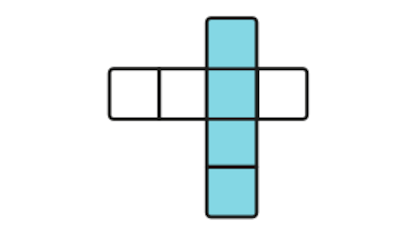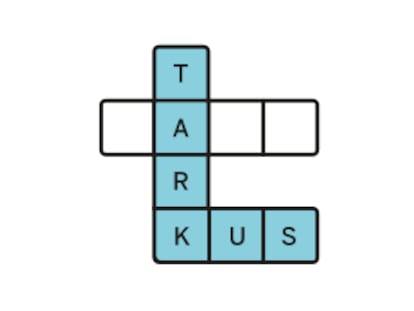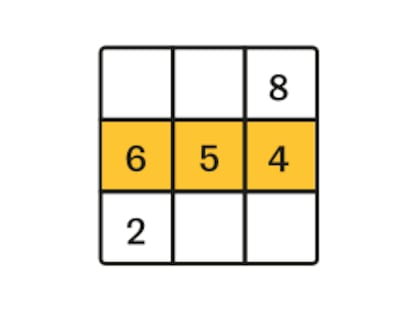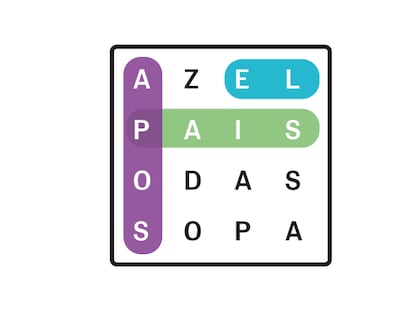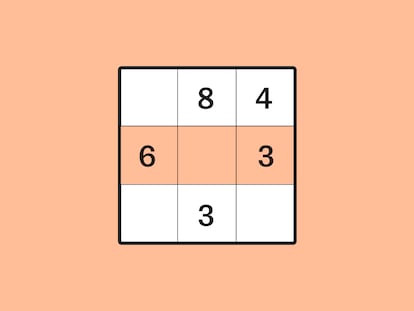Hyperconnectivity and holographic calls: Telecoms race to meet growing demands
The business is reinventing itself amid regulatory pressure, decreased earnings and the rise of new technologies


Antonio García Romero is the executive director of Teldat, a Spanish telecommunications business, who just a few weeks ago, bought a new fridge. “Even the cheapest model had a Wi-Fi connection,” he says.
Human beings are storing more and more data on the cloud, and the development of communication networks and smart devices have allowed the world to enter a new era of hyperconnectivity, of which the online fridge is just one harbinger. Any small-town resident has the option to connect to the internet via their car, television, watch, tablet, cell phone, computer and — thanks to Alexa, Amazon’s smart speaker — even one’s living-room lamp and blinds can be connected.
This new reality requires more and more powerful networks, broader bandwidths and lower latency (the time delay required for the transfer of data). A refrigerator, for example, is a simple appliance with few connection requirements, but the networks of the future, from the most advanced 5G to 6G, are being designed to support much more powerful connections and fresh forms of communication and digital interaction that seemed impossible a decade ago. Holographic calls, remote surgery, automated factories, self-driving vehicles, precision farming systems and smart cities are all part of a fast-approaching future that will definitely require stronger cables.
Javier Arenzana, head of telecommunications at KPMG consulting firm in Spain, is betting on a future in which technology will be much more integrated into our lives.
“The proliferation of AI and natural language processing will change access interfaces,” he predicts. ”We will communicate so much with digital entities that the meaning of communication will no longer be associated only with interactions between humans.”
This coming paradigm shift has forced large companies in his sector to implement major transformations in order to innovate and adapt to new customer needs.
The great leap from 5G to 6G
The rollout of 5G in Spain, which has been key to this transformation in the country, continues apace. At the mid-way point of 2023, it reached 92.3% of the population, according to numbers from the Spanish Ministry of Digital Transformation. Still, if one measures actual 3.5 GHz band coverage, which is essential for full 5G capacity and considered “the priority band” by the European Union, that percentage drops to 58.13%.
In rural areas, this expansion is happening more slowly, although it has grown significantly — from 50.4 to 68.9% in just a year. The Spanish government has invested more than $1.1 billion to develop the network, along with the fiber optics network, particularly in small towns.
In contrast to 4G, 5G allows for many more devices to be simultaneously connected, reduces latency and allows for services that require real-time communication, like operating robots in factories, smart video surveillance and autonomous cars. The next phase — the so-called 5G Advanced — will introduce improvements in energy efficiency, stability and security.
According to Ruth Gamero, Telefónica technology expert, “They are going to improve spectral and energy efficiency, taking advantage of the entire 5G functionality with new services.”
In the long term, 6G promises an even greater leap.
Satellite connectivity
This technology is still in a standardization phase, but its network already combines communication and detection, with speeds of up to a terabyte per second and minimal latency. “6G is going to standardize all connections. Terrestrial networks will be able to connect to LEO [low Earth orbit] systems,” says García Romero. In his opinion, this evolution will be key to enabling new applications, like remote surgery and autonomous agriculture. “We don’t just need more bandwidth, we also need less latency. That’s the key to a machine operating remotely without failures,” he says.
One example of this is offered by his firm, which has 252 employees and runs the Wi-Fi network on which the company Renfe’s high-speed trains operate. “What we now want is, when operators have poor connectivity on certain routes, for the system to automatically change to Starlink, the high-speed satellite internet service that was developed by SpaceX.”
“That way, the client can continue navigating with no problems while they ride the train,” he says. This kind of hybrid solution, which combines cell phone, fiber optic and LEO satellite networks, are growing more common in rural, industrial and mobile environments. “The terrestrial network doesn’t arrive in a town in Cuenca, but there is satellite coverage,” says the Teldat director.
Reinvent or die
Despite exponential growth in data traffic, large operators are facing a structural viability crisis. According to the report The Ideal Telco by the Oliver Wyman consulting firm, European telecommunications firms are poorly valued by the market: they trade at very low prices, relative to the benefits they receive.
“The fragmentation of the European market and commercial pressure has reduced margins,” says Arenzana. “Regulators must allow the kinds of fusions that really lead to benefits and at the same time, maintain incentives for commercial and technological innovation.”
To do so, the report proposes a profound restructuring of the business model: extreme operational efficiency, separation between network and innovation and diversification into new digital services. According to the report’s authors, the sector needs topline permission, or permission to increase earnings without destroying value, and much more aggressive cash conversion efficiency, meaning greater efficiency to turn earnings into actual cash.
That would imply, states the report, a complete transformation, from a more personalized user experience to a total reconfiguration of operational models. The document suggests that only telecommunications firms that integrate data, artificial intelligence and open technological architecture will be able to compete in a market in which massive companies set the pace.
To change current perception of the telecommunications industry, the study puts forward a plan in which firms focus on sustainable competitive dynamics between operators and policymakers, clear differentiation between premium and low-cost brands, the use of personalized strategies and expansion beyond core services.
Seventy percent of telecommunication businesses’ earnings, states the report, continue to come from traditional services like voice and connectivity, products that are increasingly seen as basic, with low margins. That contrasts with the agility of platforms like Netflix, Amazon and Google, which offer online services without having to invest in physical networks.
In addition to rationalizing cost structures and simplifying operations, telecommunication firms must also separate into two internal layers, one oriented towards the stability of the primary business and another dedicated to innovation that is able to scale digital services like cybersecurity, cloud, digital identity and fintech, states the consulting firm’s report. The ideal business, it says, doesn’t operate as a single integrated entity, but as a federation of entities with differentiated goals, some focused on efficiency and others on growth. That differentiation will allow firms to be able to compete with big tech without getting trapped in legacy infrastructure.
Oliver Wyman’s experts also identify some generic factors within the industry itself that will provide a boon to businesses that know to take advantage of them, like the fact that telecommunications networks have gone from being mere connectivity providers to fundamental strategic actors in national security. Additionally, regulators are beginning to rethink current market structures, the next wave of technological innovation will be longer and more predictable, and traditional operators in mature markets are prioritizing market expansion and service enhancement over market share growth.
The telecommunications sector can no longer depend solely on connectivity, say experts. Firms must become integral technology providers capable of offering everything from cybersecurity to cloud services, data analysis and open platforms for third parties. In a world in which everything is connected, the key is no longer merely laying the cable, but in what happens as a result of that cable.
“You can’t make a living digging trenches and laying cable. That service is standardized,” says García Romero, a nod to the fact that excessive competition has scuttled its chances of large profits.
Sign up for our weekly newsletter to get more English-language news coverage from EL PAÍS USA Edition
Tu suscripción se está usando en otro dispositivo
¿Quieres añadir otro usuario a tu suscripción?
Si continúas leyendo en este dispositivo, no se podrá leer en el otro.
FlechaTu suscripción se está usando en otro dispositivo y solo puedes acceder a EL PAÍS desde un dispositivo a la vez.
Si quieres compartir tu cuenta, cambia tu suscripción a la modalidad Premium, así podrás añadir otro usuario. Cada uno accederá con su propia cuenta de email, lo que os permitirá personalizar vuestra experiencia en EL PAÍS.
¿Tienes una suscripción de empresa? Accede aquí para contratar más cuentas.
En el caso de no saber quién está usando tu cuenta, te recomendamos cambiar tu contraseña aquí.
Si decides continuar compartiendo tu cuenta, este mensaje se mostrará en tu dispositivo y en el de la otra persona que está usando tu cuenta de forma indefinida, afectando a tu experiencia de lectura. Puedes consultar aquí los términos y condiciones de la suscripción digital.
More information
Archived In
Últimas noticias
All the effects of gentrification in one corner of Mexico’s Colonia Roma
Palestinian reporter Youmna El Sayed: ‘My family told me I had to choose between being a journalist or a mother’
Russell Tovey: ‘I was advised many times not to come out, I don’t think there was many people who’d done that — and I feel really proud that I’m one of those that did’
Merz tries to replace Macron at the helm of Europe
Most viewed
- The low-cost creative revolution: How technology is making art accessible to everyone
- Christian Louboutin: ‘Young people don’t want to be like their parents. And if their parents wear sneakers, they’re going to look for something else’
- US sanctions against jailed cartel leader ‘El Marro’ highlight Mexico’s lack of control over its prisons
- Families demand repatriation of bodies of Colombians who died in Ukraine: ‘This war is a slaughterhouse for foreigners’
- Liset Menéndez de la Prida, neuroscientist: ‘It’s not normal to constantly seek pleasure; it’s important to be bored, to be calm’






















